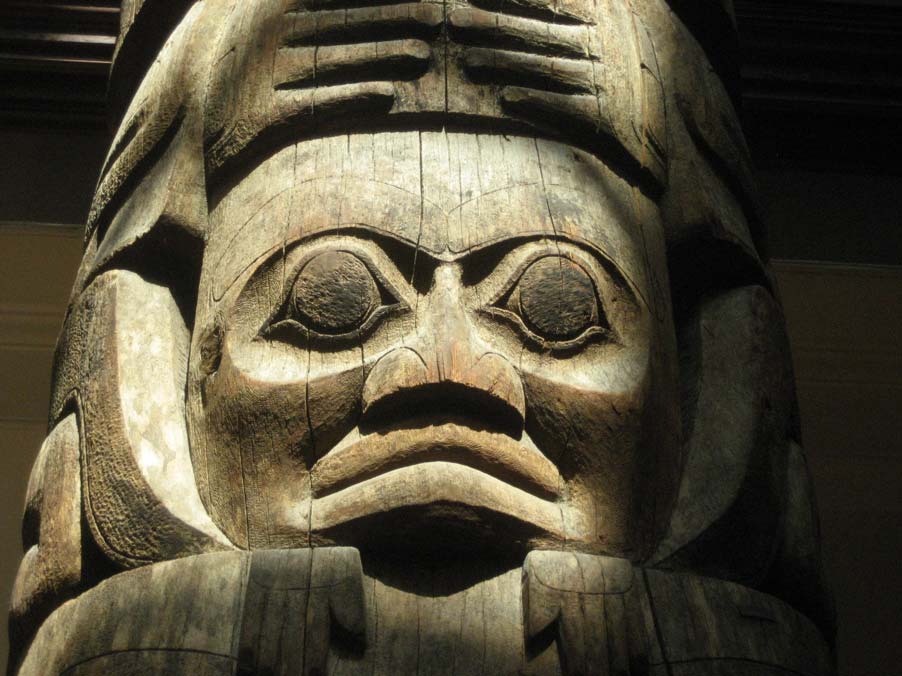The Totems Haida Gwaii, Canada: A Mortuary Pole for the Soul
One of the most beautiful and historic areas in Canada is Haida Gwaii, which is an archipelago 155 miles (250 kilometers long). Here a visitor can view an area of great natural beauty of historic importance and can feel that they are going back in time and experiencing life as the First Nation people before the coming of the Europeans. Perhaps the most fascinating part of the island is its astonishing totem poles.
Time Stands Still in this Natural Paradise
The archipelago is composed mainly of the islands of Moresby and Graham and lies off the coast of British Columbia in the Pacific Ocean. The islands are between 40 to 80 miles (64 -128 km) off the mainland and are very isolated. There is so much to see here, there is a rainforest of Sitka Spruce and many rare examples of flora on Graham and Moresby Island.

The natural beauty of Haida Gwaii (Rondeau, C / CC BY 2.0)
There are also colonies of sea lions, especially on Queen Charlotte Island. The archipelago also has many spectacular fjords and beaches and the waters are great for kayaking, but they can be dangerous. The area is protected by Gwaii Haanas National Park Reserve and the seas around the archipelago are part of the Gwaii Haanas National Marine Conservation Area Reserve. The islands were known as the Queen Charlotte Islands until 2010 when they were changed to their traditional name, Haida Gwaii. The name Haida Gwaii means the ‘islands of the people’ or the Land of the Haida.
The Soul Merged with the Totem, and Once Reclaimed by Earth, Continued the Journey
Totems played a very significant role in the culture of the Haida, who are believed to have inhabited the archipelago for millennia. The totems are found all over the islands and although some are decaying, others are in good condition as they have been carved in recent decades.

Older totem poles of Haida Gwaii (Brodie, G / CC BY 2.0)
The tradition of the totem pole is still a living one in Haida Gwaii. One of the best places to see the totems are outside of Skidegate in Kaay Llnangaay at the Haida Heritage Centre. Here it is possible to see a Haida craft person working in a modern studio, using traditional techniques.
- 13,800-year-old Haida site found underwater in Canada
- Oldest human footprints yet discovered in North America found in British Columbia
- Witchcraft, Worship or Public Shaming? The Puzzling Purpose of Totem Poles in North America
The totem poles, both modern and old, are majestic giants that are carved from the trunks of trees, mostly cedars. They are known as Gyáa'aang in the Haidan language. The monumental sculptures are symbolic representations of animals and beings. These totem poles are very important in the art of North West Canadian First People’s and traditionally they are often brightly colored. They are used by the Haida to express kinship groups, their history and to welcome visitors. Many are used as memorials to the dead and demonstrate the Haida belief that there was no distinction between the natural and the spiritual world. The totems on a pole tell a narrative and they are highly stylized. The style of each totem is unique to a village or a kinship group and they were typically carved by highly skilled master-carvers. In recent years the artistic merit of the totems has been recognized and they are now seen as an important part of Canada’s artistic heritage and indeed, they have influenced many modern artists.
Ninstints Village
If the visitor wants to experience something of the Haida culture, it is possible to visit the old Haida village on Anthony Island (SGang Gwaay), which is now a UN heritage site.

Traditional longhouse in Hlk'yah GawGa/Windy Bay (Public Domain)
22 longhouses once stood here, with 30 to 40 people living in each. The remarkable village is slowly decaying and a conservation project undertaken in recent years is trying to save the site and slow the decay of the totem poles.
The Remarkable History of Haida Gwaii
The islands were occupied for at least 8,000 years and possibly longer. They were first sighted latterly by the Spanish and they were explored by Captain James Cook. The Haida or their ancestors had been settled on the islands for thousands of years and had developed a society based on fishing. They were renowned for their seamanship and their craftsmanship and had a reputation for being war-like. It has been claimed that they also practiced raiding and slavery.
The arrival of the Europeans brought conflict and disease and the population of the ‘Land of Haida’ fell from up to 8000 to about 600 by World War I. Smallpox was believed to have killed a great number of Haida. The population of Haida Gwaii has recovered to 5000 as of 2015. The archipelago is now popular with botanists, researchers, and tourists.
How to see the Totems
The quickest way to visit Haida Gwaii, is by air. There is a daily ferry from Prince Rupert but be warned it can take between seven and eight hours. There is plenty of accommodation near the Haida Gwaii totems. Visitors can stay in guesthouses and camping parks.
Top image: Haida Gwaii totem pole Source: (Public Domain)
By Ed Whelan
References
Fedje, D.W., Mathewes, R. eds. 2011. Haida Gwaii: human history and the environment from the time of loon to the time of the iron people. UBC Press.
GWAII, H. 1986. Islands of the People.
Available from https://entreedestinations.com/wp-content/uploads/2017/03/Haida-House-.pdf.
Moray, G., 2006. Unsettling Encounters: First Nations imagery in the art of Emily Carr. UBC Press.
Available from https://qnkxgmgso02.storage.googleapis.com/QjAwQkhPVkNNSQ==02.pdf.
Motzkus, H.T. 2005. The Totems of Haida Gwaii. In Phi Kappa Phi Forum (Vol. 85, No. 3, p. 8). National Forum: Phi Kappa Phi Journal.

















